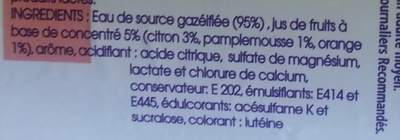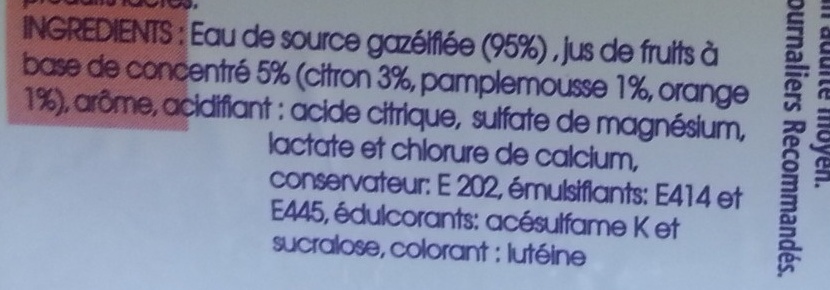Taillefine Fiz Agrumes - 1,5 L
This product page is not complete. You can help to complete it by editing it and adding more data from the photos we have, or by taking more photos using the app for Android or iPhone/iPad. Thank you!
×
Barcode: 3057640164378 (EAN / EAN-13)
Common name: Boisson gazeuse rafraîchissante au jus de fruits avec arômes et édulcorants enrichie au calcium et au magnésium
Quantity: 1,5 L
Packaging: Plastic, Bottle, Bottle cap, Wine cork
Brands: Taillefine, Danone, Taillefine Fiz
Categories: Plant-based foods and beverages, Beverages, Plant-based beverages, Carbonated drinks, Fruit-based beverages, Artificially sweetened beverages, Sodas, Diet beverages, Fruit sodas, Diet sodas, Light fruit sodas
Labels, certifications, awards:
Low or no sugar, Low sugar, Reduced sugar, Green Dot, No artificial colors, No aspartame, fr:A l'eau de Source, fr:Eco-Emballages
Manufacturing or processing places: L'Européenne d'Embouteillage - EdE [Filiale Groupe Orangina Schweppes (Filiale Suntory)] - 433 Chemin des Matouses - 84470 Châteauneuf-de-Gadagne, Vaucluse, Provence-Alpes-Côte d'Azur, France
Traceability code: EMB 84036E - Châteauneuf-de-Gadagne (Vaucluse, France)
Stores: Franprix
Countries where sold: France









